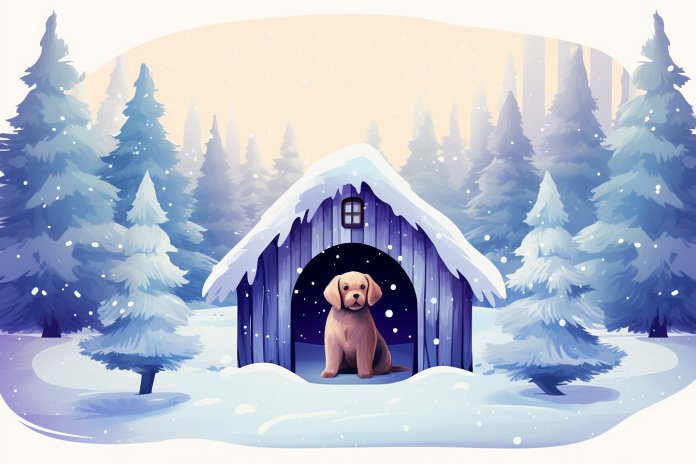
Outdoor dogs used to be more common, but it’s now known that keeping dogs outside all the time is risky. This raises the question of whether dogs can live outside in winter. The answer is no, as dogs can get cold and suffer from frostbite and hypothermia. This article explains the signs of a dog being too cold, why dogs shouldn’t live outside in winter, and how to keep them safe during the colder months.
Signs of a Dog Being Too Cold Outside
Dogs can shiver, tremble, and show signs of frostbite if they’re too cold outside. They may also sleep more, become lethargic, and curl into a ball to keep warm. Seeking shelter or hiding away are also indicators that a dog is too cold.
Body Language
Shaking, cowering, weakness, dropped ears, tail tucking, and sleepiness are signs that a dog is too cold.
Other Signs
Cold body and restlessness, very dry and itchy skin, whining and whimpering, and signs of frostbite are additional signs that a dog is too cold.
History of Dogs Living Outside in the Winter
Wolves and undomesticated dogs could survive outside in winter due to their thick fur coats and the ability to gain weight for insulation. They also slept close together for warmth. However, modern dogs have shorter and less dense coats, lack necessary insulation, and don’t have the warmth of a pack. They are not equipped to handle extreme cold temperatures.
Science Behind Why Dogs Should Not Live Outside in the Winter
Dogs are social animals and need human interaction and attention. Leaving them alone outside sets them up for loneliness and frustration. Dogs can still suffer from frostbite and hypothermia, so if it’s too cold for humans, it’s too cold for dogs. Dogs should only go outside for short walks and potty trips.
How to Keep Your Dog Safe During the Winter
Don’t make your dog stay outside during winter. Bring them inside where they have a warm house and daily interaction. When taking them outside, especially for walks, use precautions. Thick and long-haired dogs handle the cold better, but all dogs can benefit from puppy jackets and boots to keep them warm and protect their paws from cracking. Walks should be short and during the warmest part of the day, limiting exposure to temperatures below freezing.
By following these guidelines, you can ensure your dog stays safe and warm during the winter months.
Dogs should not be left outside in the winter as they are not equipped to handle the cold temperatures and can suffer from frostbite and hypothermia.

Tips & Things to Know
1️⃣ Dogs should never live outside in the cold winter months. Even if they have a fur coat, dogs can still suffer from frostbite and hypothermia. It is important to bring them inside where they have a warm and comfortable environment.
2️⃣ Watch out for signs that your dog is too cold outside, such as shivering, lethargy, and curling into a ball. These signs indicate that your dog is feeling too chilly and should be brought inside to warm up.
3️⃣ If you need to take your dog outside during winter, especially for walks or potty breaks, take precautions to keep them warm. Use a puppy jacket or doggy boots to provide extra insulation and protect their paws from the cold. Limit walks to short durations and choose the warmest part of the day to avoid exposing your dog to extreme cold for too long.
Frequently Asked Questions, Answered ✅
1. Can dogs live outside in the winter?
– No, dogs should not live outside in the winter as they can suffer from frostbite and hypothermia.
2. How can I tell if my dog is too cold outside in the winter?
– Signs of a dog being too cold include shivering, lethargy, curled into a ball, seeking shelter, and weak/tired muscles.
3. Can dogs handle the cold weather like wolves?
– Domesticated dogs do not have the same thick fur coats and insulation as wolves, so they are not equipped to handle extreme cold temperatures.
4. Are dogs immune to the cold weather because of their fur?
– No, dogs can still suffer from frostbite and hypothermia even with their fur coats. If it’s too cold for you, it’s too cold for your dog.
5. How can I keep my dog safe during the winter?
– Bring your dog inside, provide a warm and comfortable living space, limit outdoor time to short walks and potty trips, and consider using jackets and boots for added warmth and protection.